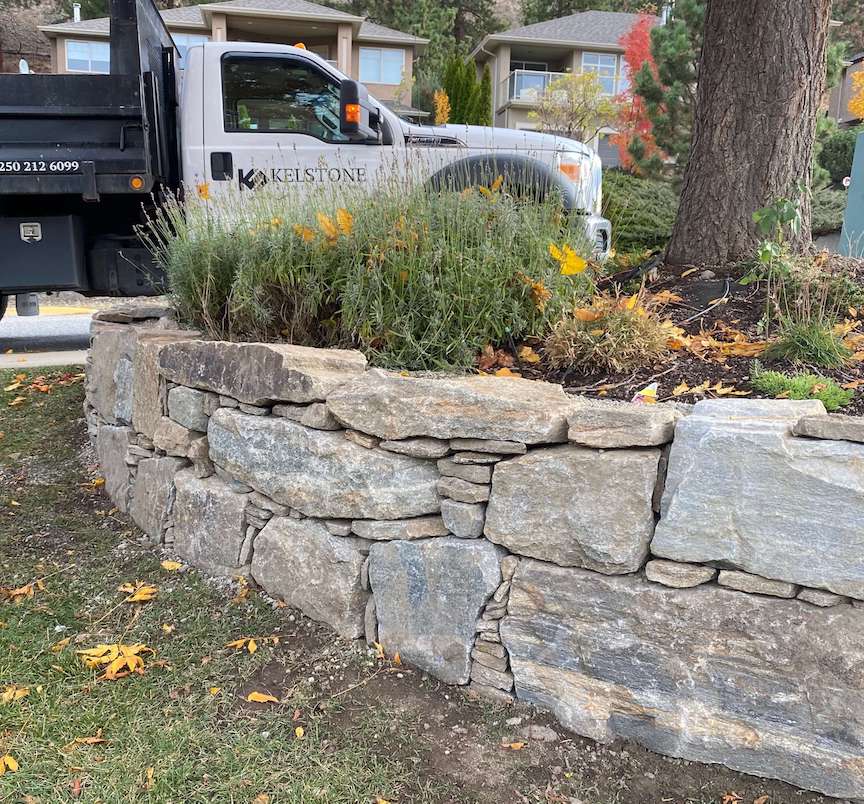
To build a rock retaining wall, you must first decide how you will attach the stones. You can use dry-stacking, anchored, free-standing or mortared retaining walls. Here are some simple steps to make your rock wall strong. First, you should mark the location of the slope on the property. Once you have marked it, you can proceed to placing the stones on the slope.
Dry-stacking
When building a rock retaining wall, one of the best techniques is dry-stacking. This type of construction is best left to professionals who have experience and an expert hand. Dry-stacking allows you to use angular flat stacking stones instead of round field stones. The final product will be a strong and beautiful wall. And remember that dry-stacking can be a great way to create a low-maintenance backyard retreat.
Anchored retaining walls
Anchored rock retaining walls are constructed of rock or tightly packed soil that is fastened with cables or other supports. To hold the panels in place, strong anchors are inserted into the soil or rock. To add even more strength to the wall, cables or steel rods are inserted into the anchor holes. Anchored rock retaining walls are an excellent choice for thin walls. They also provide tremendous support for heavy loads.
Free-standing retaining walls
Rock retaining walls are a popular choice for sloped areas, since they reduce the amount of rocks required for the wall. The walls can be free-standing or stacked, and the height you choose is entirely dependent on your budget. There are several types of retaining walls, and each has its own unique design and function. For information on each type of retaining wall, read the description below. Listed below are some of the most common types.
Mortared retaining walls
While mortared rock retaining walls may be a beautiful way to retain a sloped area, they can also be difficult to build during winter. Depending on your climate and region, this project may require a lot of planning, so make sure you start early. Pour the concrete footings ahead of time to prevent settling and cover the materials with tarps. To construct a retaining wall, the steps to install a footing are the same for both methods.
Sandstone retaining walls
Sandstone retaining walls are one of the most attractive types of rock retaining wall. They are made from a natural material with beautiful caramel tones that are great for landscaping projects. They are also as strong as a house and are just as safe. The benefits of using sandstone retaining walls are numerous. Keep reading to learn more about these retaining walls. You’ll also discover the pros and cons of sandstone retaining walls.
Bush rock retaining walls
A Bush rock retaining wall is a type of retaining wall that makes use of strategically placed rocks. It relies on the weight of these rocks to resist lateral earth pressure and prevent soil from shifting. Using bush rock for retaining walls is a natural, low-maintenance option that is also extremely cost-effective to install. In addition, it drains extremely well, which is crucial for retaining walls because sleeper retaining walls often suffer from water saturation issues.
Boulder retaining walls
If you’re looking to stabilize a slope and protect planted areas from erosion, boulder retaining walls are a great choice. Boulder walls can be used as plant groups, pathways, or a combination of these features to add depth and beauty to a garden or landscape. For an elegant, natural look, you can consider using decorative stackable blocks or manufactured stone walls. Many of these manufactured blocks are available in a growing range of colors and simulated materials to complement the natural appearance of your landscaping.
Contributed by Kelstone contracting Kelowna – Foremost experts in retaining wall construction
contact Kelstone at
Kelstone Contracting
2951 Richter Street,
Kelowna BC V1Y 2R8
Phone 250-212-6099
